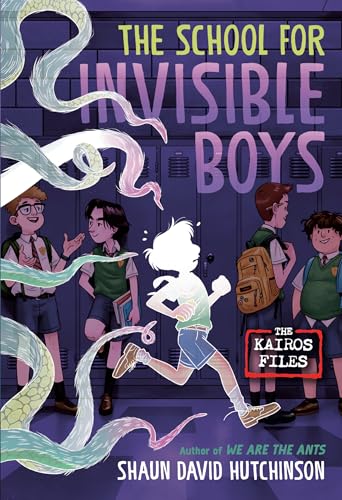By Shaun David Hutchinson
Some see ghosts, but he feels them.
Shaun David Hutchinson’s “The School for Invisible Boys” offers a compelling mix of supernatural adventure and emotional depth, ideal for readers aged 10–14. The story centers on Hector Griggs, a sixth grader navigating bullying at St. Lawrence’s Catholic School for Boys, who discovers he can turn invisible. His life collides with Orson, a boy trapped in the invisible world for decades, and Sam, a new student who challenges traditional gender roles. Together, they face a creature that feeds on loneliness; a metaphor for the isolation Hector feels as he grapples with his crush on his former best friend, Blake. Hutchinson’s tight pacing and relatable school dynamics anchor the fantastical elements, making the story accessible even as it explores invisibility as both a literal and emotional state. Short, dialogue-driven chapters propel the narrative forward, while cliffhanger endings and a school setting brimming with secrets keep pages turning.
Educators seeking high-interest, low-barrier texts will find this novel especially effective. Hutchinson’s vivid descriptions of the invisible realm (a monochrome world where emotions manifest as colors) provide strong visual scaffolding for learners who benefit from mental imagery. The prose uses concise sentences and accessible vocabulary; idiomatic language is limited to phrases familiar to most middle schoolers. Themes of identity and belonging resonate through Hector’s journey, offering natural discussion points for social-emotional learning, particularly around bullying and LGBTQ+ experiences. The novel’s structure supports struggling readers: chapters average 3–5 pages, dialogue breaks up dense text, and supernatural stakes (escaping a soul-eating monster) maintain engagement without overwhelming complexity. Recognized by Kirkus for its “evocative metaphors” and praised by The Horn Book for balancing “action with introspection,” this book works equally well as a classroom read-aloud or independent reading choice. Its blend of relatable school conflicts, manageable language, and imaginative paranormal elements makes it a strategic addition to collections.

